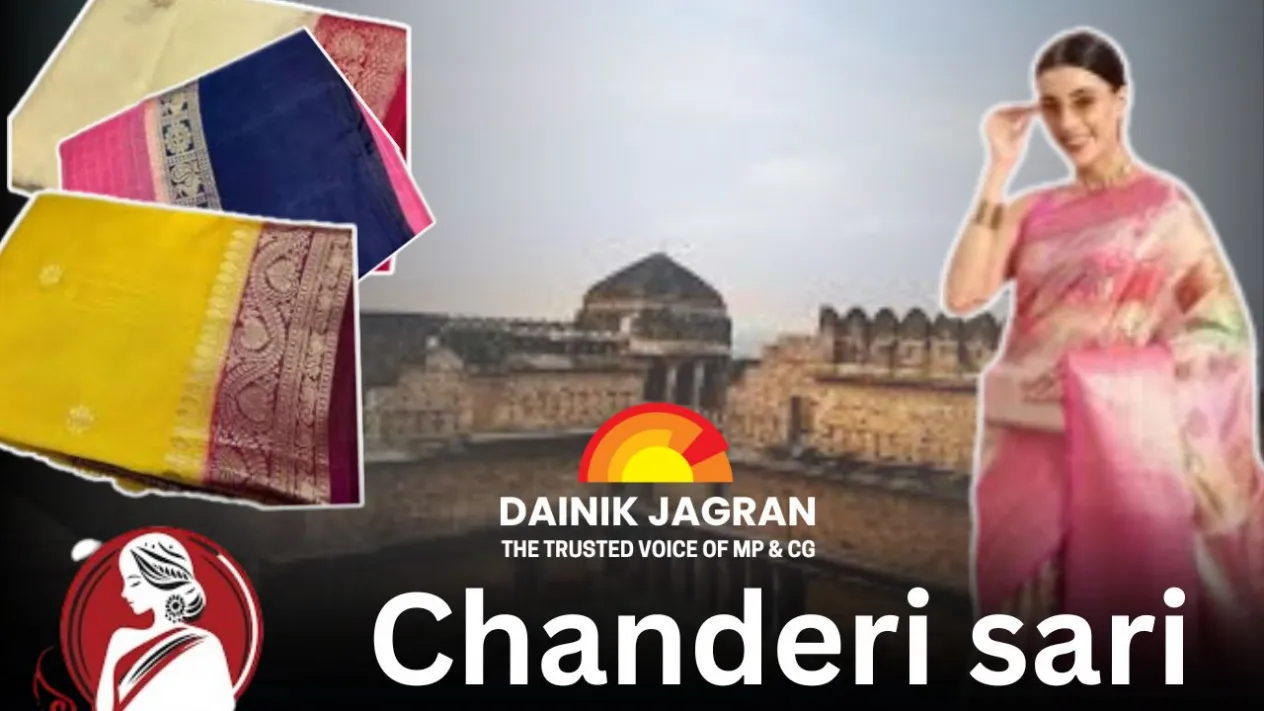Chanderi: The Regal Identity of Traditional Weaving
Ayushi Malviya

Chanderi, a small historic town located in Ashoknagar district of Madhya Pradesh, is renowned both nationally and internationally for its exquisite handloom fabrics and silk sarees. Crafted using traditional techniques and pure silk and cotton threads, Chanderi sarees not only elevate the elegance of Indian attire but also offer a royal experience to the wearer.
What Makes Chanderi Fabric Special?
Chanderi fabric is known for its lightweight, sheer texture, and glossy finish. It is woven using three types of yarns:
-
Pure Silk
-
Cotton Thread
-
Silk-Cotton Blend
This fabric is considered ideal for warm climates as it provides both beauty and comfort.
Artistic Designs and Traditional Weaving
The designs woven into Chanderi fabrics reflect traditional and cultural motifs, including:
-
Asharfi (Coin)
-
Moon
-
Peacock
-
Lotus
-
Geometric Patterns
These motifs are often woven using zari (gold or silver threads), which lend the fabric a royal and luxurious aura.
A Contemporary Blend with Modern Hues
Currently, the Mrignayani Emporium at Jawahar Chowk in Bhopal is hosting a Chanderi Festival, where some of the country’s finest weavers are exhibiting their exclusive sarees. A special attraction this year is a Bada Mahal-inspired Chanderi saree priced at ₹1,34,000, handcrafted over a month by 10–12 artisans.
Today, Chanderi sarees have become the choice of several Bollywood actresses and are making a growing impact in the fashion world.
Geographical Recognition and Cultural Pride
In 2005, the Chanderi saree was awarded the Geographical Indication (GI) tag, affirming its authenticity and regional uniqueness. More than just a fashion piece, it is a symbol of cultural heritage—worn during festivals, weddings, and special occasions with traditional pride.
Economic Significance and Identity of the Weavers
Approximately 3,500 weaver families in Chanderi keep this tradition alive. Weaving is not just an art for them but the primary source of livelihood. Related industries like dyeing, spinning, and trading are also intricately linked with this craft.
Chanderi’s New Flight in the Fashion World
Renowned fashion designers such as Sabyasachi Mukherjee, Rahul Mishra, and Anita Dongre have featured Chanderi in their collections, taking it to international fashion platforms. Today, beyond sarees, Chanderi fabric is being used in garments like kurtas, dupattas, stoles, dresses, and jackets.
Conservation Efforts and Challenges
While Chanderi’s heritage is exceptional, it faces challenges from power looms, shifting consumer preferences, and limited marketing. However, the government, NGOs, and designers are working together to preserve and promote this legacy.
Initiatives like GI tagging, digital marketing platforms, and skill development workshops are empowering weavers and connecting them to global markets.
About the author
Related Posts
Latest News
.png) RSS Prant Pracharak Meet in Delhi, July 4–6
RSS Prant Pracharak Meet in Delhi, July 4–6 

.jpg)

6.png)
.png)
1.jpg)
.png)
.png)

.png)
.png)
